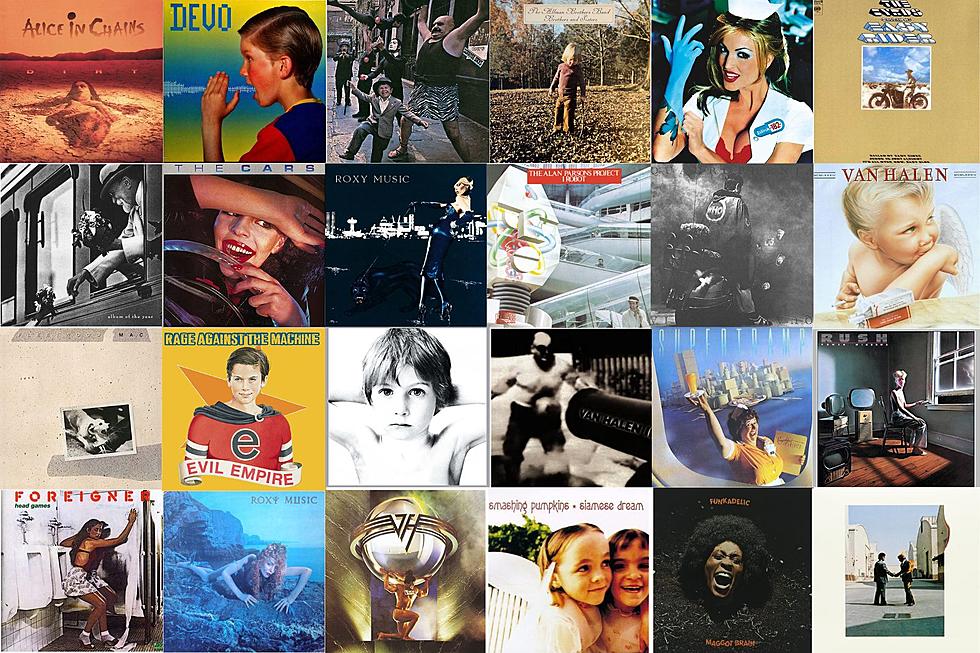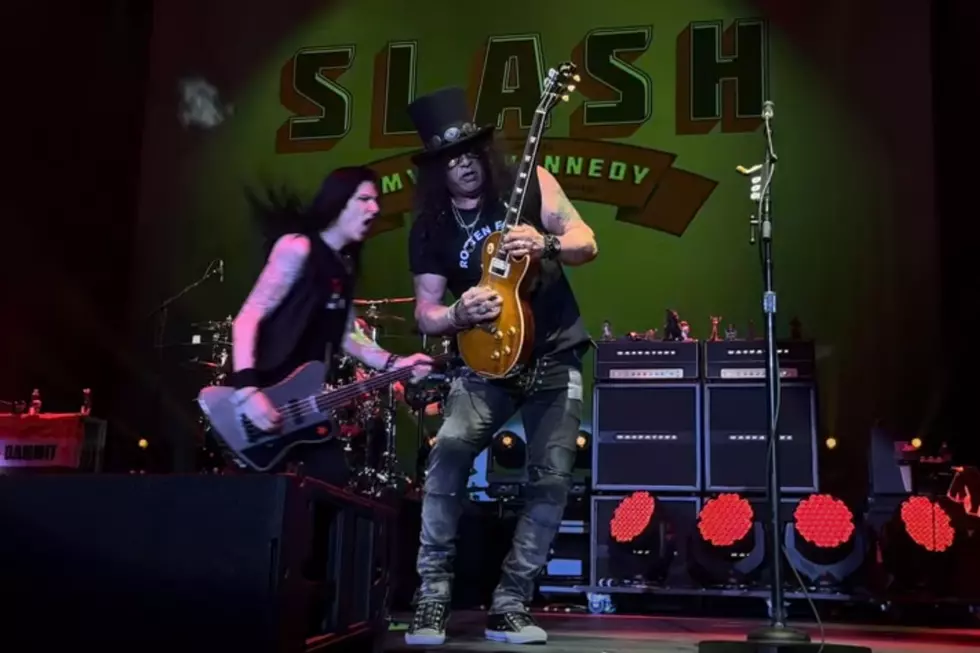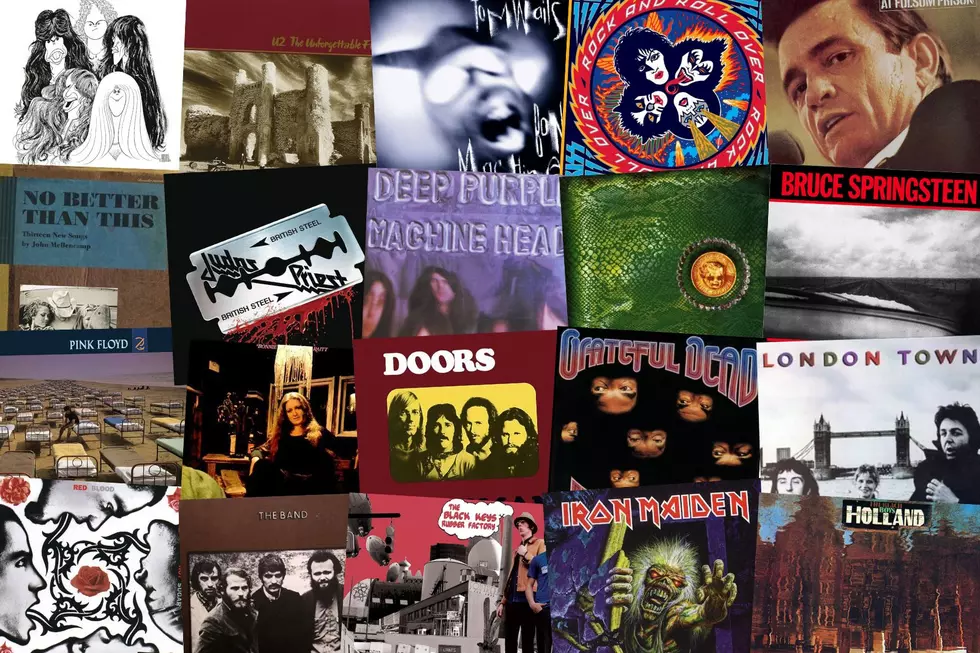Rock’s Most Criminally Underrated Albums
What are the most criminally underrated albums in rock history? We asked seven of our writers that question, and in both the video above and in the expanded text below, you will find each of them standing up for a record they feel was wrongly ignored by too many music lovers. Who knows? Maybe among our choices you'll find an new favorite album. At worst, you'll have a few more reasons to make fun of us in the comments section. While you're there, be sure to let us know what your choices are for Rock's Most Criminally Underrated Albums of all time.
'The Who Sell Out' (1967)
The WhoBy Dave Lifton
It was soon overshadowed by Tommy, Who’s Next and Quadrophenia, but The Who Sell Out is, quite possibly, the full realization of Pete Townshend’s ambitions. Released in 1967, The Who Sell Out paid tribute to “pirate radio,” where a ship containing a studio and transmitter would broadcast from international waters, but close enough to the shore be heard by the general public. In Britain at the time, the broadcasting of rock music on BBC Radio was heavily limited, so pirate radio played a major role in giving airtime to heavier bands like the Who. Townshend structured the album to sound like a block of programming of Radio London, complete with jingles and fake commercials in between the songs, which showed that Townshend was becoming an increasingly sophisticated composer. Three of the most beautiful ballads Townshend would ever write — “Our Love Was,” “Can’t Reach You” and “Sunrise” — were on The Who Sell Out. And ironically, even though it’s overlooked in the Who’s catalog, its lone single turned out to be their biggest hit in America. “I Can See for Miles” was the only Who single to crack the Top 10 on the U.S. singles chart. But the main reason why The Who Sell Out stands apart from his other masterpieces is that there’s an irreverent sense of humor that runs throughout the record. From the cover photo of Roger Daltrey submerged in a tub of beans to songs like “Mary Anne With the Shaky Hand” and “Tattoo,” the Who would never be so wonderfully silly again, as Townshend began to address more serious issues in his songwriting.
'Vincebus Eruptum' (1968)
Blue CheerBy Eduardo Rivadavia
The most underrated classic rock album of all time is Blue Cheer’s Vincebus Eruptum, because no other LP has contributed so much in exchange for so little recognition. Both the Stooges and the MC5 are more frequently celebrated by punk-partisan critics for capturing the primal power of rock 'n' roll at its most savage and uninhibited, but the seminal and seismic Vincebus Eruptum preceded these bands’ first, very notable, efforts by at least a year. What’s more, the album saw Blue Cheer exploring and then exceeding the very limits of available amplifier technology, feedback abuse and sheer, deafening volume like no other group before it (not even Hendrix's Experience), breaking down the doors to heavy rock and metal so that Black Sabbath and their '70s brethren could march on through. Vincebus Eruptum's impact upon the softer end of the classic-rock spectrum wasn't nearly as overt (other than showing what not to do), but the album still cuts to the heart of rock 'n' roll's fundamentally rebellious, anti-establishment ethos (see the band's demolition of "Summertime Blues"), thanks to Blue Cheer's reckless mission to seize fans by the balls.
'Presence' (1976)
Led ZeppelinBy Nick DeRiso
What to make of Presence, a return to Led Zeppelin's earliest blues-focused influences after a period of titanic creativity? Well, mostly, people don't. It's understandable, on some level, considering the layered brilliance of albums like IV and Physical Graffiti. By then, Led Zeppelin had taken on a striking versatility. They sounded almost nothing like the blues musicians they'd once so blatantly emulated -- and, if the general apathy toward Presence is to be believed, nobody wanted them to anymore. Yet a return to that bedrock inspiration proved to be anything but a wistful dead end. Instead, Led Zeppelin brought along a subsequent ability to synthesize, turning the same old Delta saws into something else entirely. Listen as John Bonham unleashes fresh and subtle polyrhythms on rootsy throwbacks like "For Your Life" and "Tea for One." Even Jimmy Page's legendary Army of Guitars are no match for Bonham's fury on "Achilles Last Stand." Then there's "Nobody's Fault but Mine," which features one of the most wicked harmonica solos in all of rock, courtesy of Robert Plant. Never has the blues moved between such thundering revelation and oh-so-nimble asides. Loving look backs almost always dissolve into snoozy sentimentality. Not this time. Presence is the sound of a band that had learned something about where it had come from and was intent now on taking it to someplace entirely new.
'Waiting for Columbus' (1978)
Little FeatBy Jeff Giles
Always underrated in general, Little Feat were probably always doomed to cult status by the very things that made them special: namely, an abundance of musical talent, a subversive sense of humor and a propensity for self-destructive behavior. All of these things were foreshadowed as far back as the band's founding, which occurred after guitarist Lowell George was reportedly let go from his gig with Frank Zappa for writing "Willin'," the future Feat classic whose line about "weed, whites and wine" allegedly enraged the teetotaling Mothers of Invention mastermind, but they didn't stop the band from peeling off a string of outstanding albums throughout the '70s. While they never really achieved the mainstream success they probably deserved, Little Feat maintained a steady audience during the decade, partly by virtue of their dogged touring schedule — and you can hear the results of all those miles on 1978's Waiting for Columbus, which travels from rawer early efforts like "Willin'," "Dixie Chicken" and "Fat Man in the Bathtub" into the progressively smoother sound of later LPs, including the fusion-laced Time Loves a Hero. It's an unwieldy blend, but one expertly distilled by the group's rock-solid playing and the sharp tang of George's socket wrench slide, and it hints at even better things to come. Sadly, the band was soon derailed by George's untimely death, and although they eventually regrouped to record a series of latter-day albums that stand up in their own right, nothing ever clicked quite as satisfyingly as Waiting for Columbus — a record that should have been a bigger hit, and deserves to be more widely remembered.
'Tusk' (1979)
Fleetwood MacBy Michael Gallucci
At the time, Fleetwood Mac's Tusk was called the most expensive album in rock history. It cost something like $1 million to make. In 1979, that was a lot of money. But after the massive success of 1977's Rumours, which made the '60s British blues band global superstars, Fleetwood Mac could pretty much do anything they wanted. And they did on Tusk. They made a double album. They gave Lindsey Buckingham total control over the sessions. And they made a sprawling masterpiece that could never, ever live up to its predecessor. But judged on its own terms, Tusk is a weird, personal and brilliant unraveling of one of the era's biggest and best groups. Like the Beatles' White Album, Tusk basically positions Fleetwood Mac's three singer-songwriters -- Buckingham, Christine McVie and Stevie Nicks -- as a trio of solo artists with the other band members serving as their backing group. As a bonus, it established Buckingham as one of the brightest stars of the period -- a mad perfectionist who used Brian Wilson's intricately arranged Beach Boys records as his template. Listen to Tusk, and you can hear those million dollars gliding into an art-rock vanity project disguised as a big pop album. That's not to say there weren't plenty of pop hooks on the album: "Tusk," "Sara," "Think About Me," "Sisters of the Moon" and "Storms" rank among the band's best songs. But Tusk is best digested as a 75-minute album rather than in the bite-size morsels that made both Rumours and 1975's Fleetwood Mac such big hits. Following up one of the biggest albums ever wasn't going to be easy, so Fleetwood Mac didn't even try. Instead, they splintered into three distinct voices: the mad pop scientist, the warm, consummate singer-songwriter and the flighty witchy woman. Tusk reached the Top 5 and sold a couple million copies, a long way from Rumours' chart and sales dominance. And it was viewed as a flawed record with some good songs. But it's better than that. Way better. When Fleetwood Mac returned in 1982 with Mirage, they were back to sounding like a band again on a single-record set that pushed Buckingham's experimental tendencies off to his solo records. Rumours is Fleetwood Mac's greatest record, there's no denying that. And there's no getting around the fact that there was no way that Tusk was going to top it, no matter what it looked and sounded like. But go back and listen to Tusk with open ears 35 years later, and you'll hear a band that wasn't going to let mega-stardom get in the way of their art.
'Done With Mirrors' (1985)
AerosmithBy Matthew Wilkening
The late-‘80s rebirth of Aerosmith was a supremely welcome surprise. But some of us are still wondering why 1985’s gloriously raw Done With Mirrors couldn’t have been the album to bring them back to the promised land, instead of the comparatively over-polished Permanent Vacation. It’s not that we’ve got anything against poppy, Desmond Child-assisted hits like "Dude (Looks Like a Lady)" or "Angel," specifically. But if the band’s comeback had instead been built on leaner, meaner Done With Mirrors tracks like "Shame on You" and "The Hop," we might have been able to avoid future missteps such as "Falling in Love (Is Hard on the Knees)" and "Just Push Play." Plus, not to sound like our vinyl-obsessed friends over at Diffuser, but we'd love to see this one reissued with the awesome – and inexplicably CD-only – track "Darkness" put in its proper destined album-closing position.
'Yeah!' (2006)
Def LeppardBy Annie Zaleski
Covers records are rarely essential parts of a band's catalog; in fact, they're often seen as contract-fulfillers or considered the work of musicians out of original ideas. While in many cases that's true, the best covers albums are also quite a lot of fun -- a way for established musicians to let loose, honor their inspirations and get back to their bar-band roots. That's certainly the case with Def Leppard's 2006 covers album, Yeah!, a raucous, loose collection that lovingly highlights the band's varied influences. In fact, you can tell the group's having a blast putting their own spin on glam rock (T. Rex, Sweet, David Bowie), pure pop (the Kinks, Badfinger, ELO) and hard rock (Free, Thin Lizzy) faves. Def Leppard even unearths some obscure covers — specifically, a piano-first take on Jobriath's dramatic, torchy glam ballad 'Heartbeat' and a version of 'Hanging on the Telephone' by garage-punks the Nerves — that underscores their range as a band. But what stands out most on 'Yeah!' is that the members of Def Leppard are first and foremost huge music fans who have never lost their love for a good hook or for timeless songcraft. No wonder the group continues to tour each summer and fill amphitheaters; the passion they still have for music comes through loud and clear.
BONUS
Rock's Most Hated Albums
More From Ultimate Classic Rock









